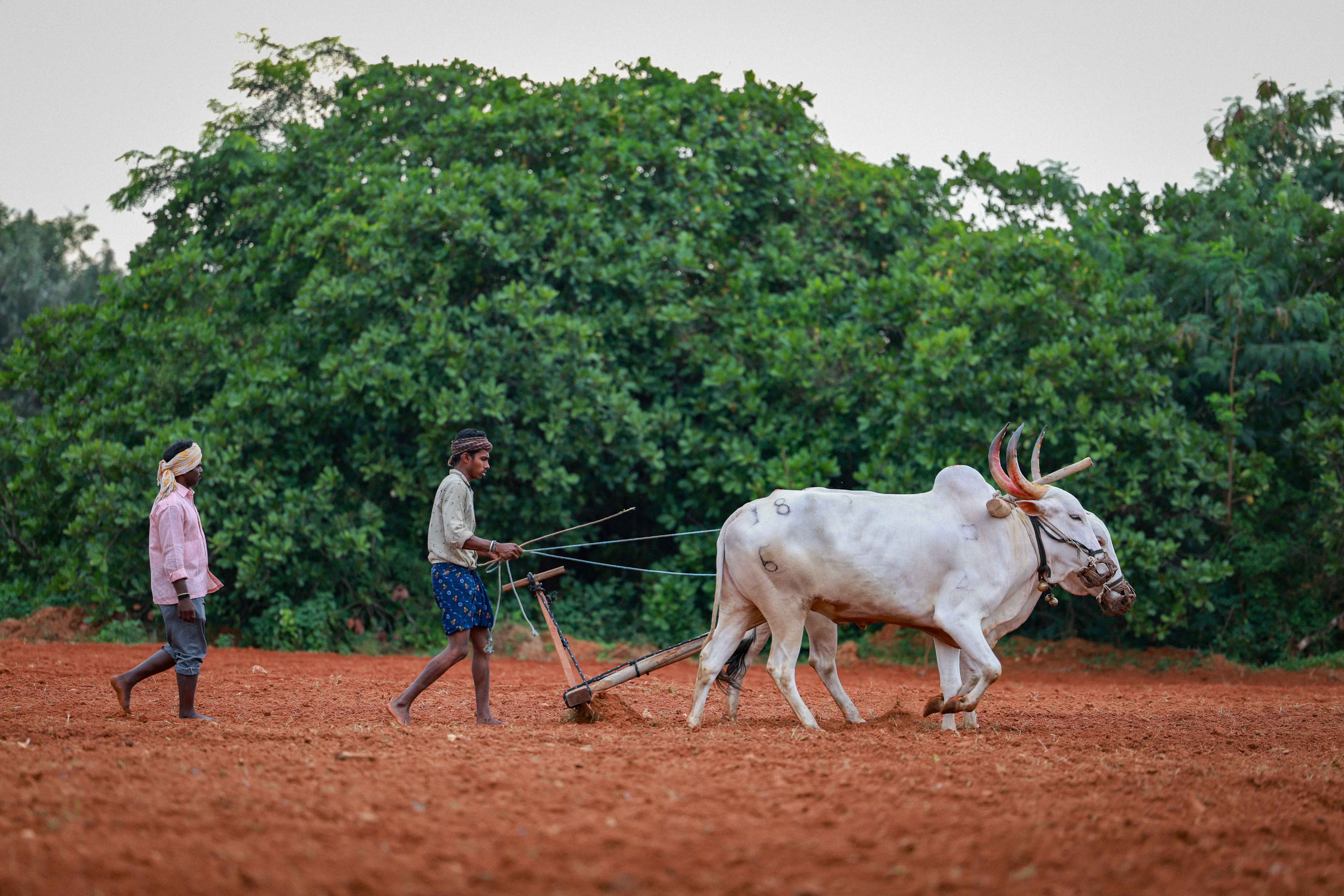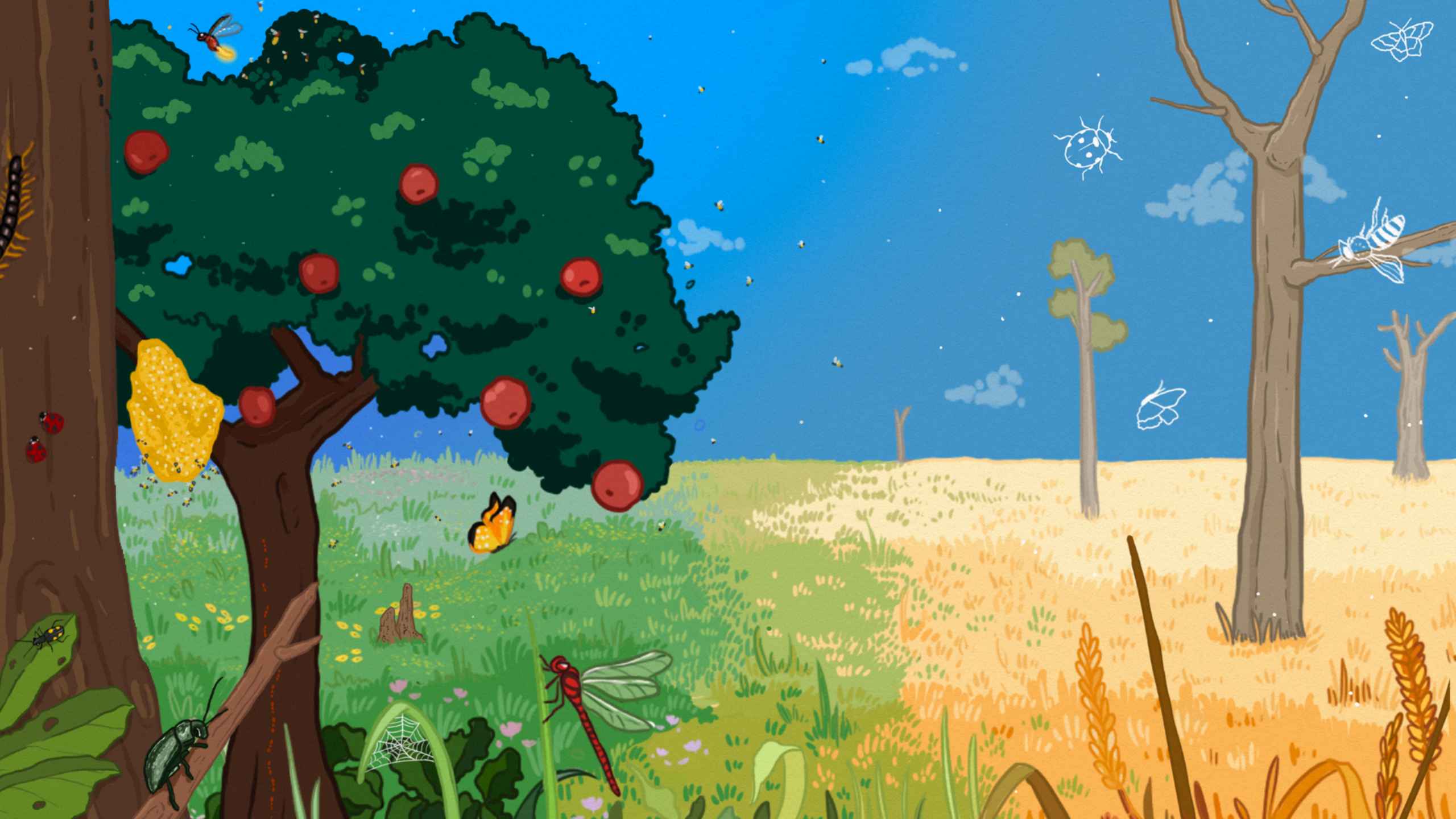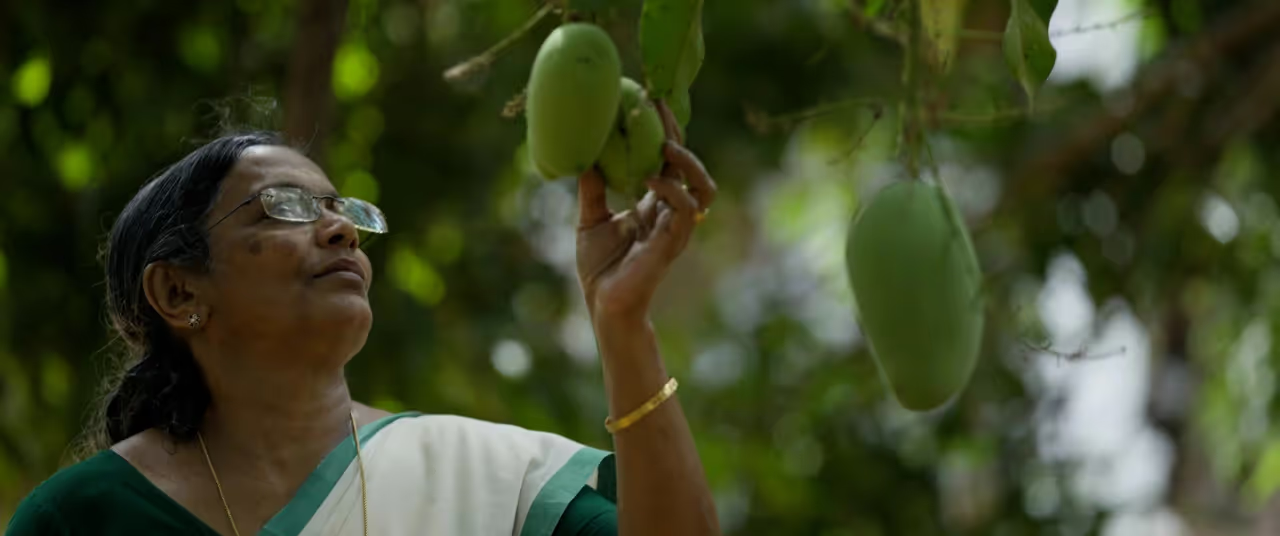As bees, moths and flies make a quiet exit, their absence will directly impact crop resilience and yield quality






Editor's Note: The planet we inherited as children is not the planet we will someday bid goodbye to. The orchestral call of cicadas in the evenings, the coinciding arrival of the monsoon with the start of the school year, and the predictability of natural cycles—things we thought to be unchanging are now at risk. An altered climate, declining biodiversity and warming oceans aren’t distant realities presented in news headlines; they affect us all in seen and unseen ways. In ‘Converging Currents’, marine conservationist and science communicator Phalguni Ranjan explores how the fine threads connecting people and nature are transforming with a changing planet.
Think back to when you were a kid. Do you remember tiny bugs sticking to your t-shirt when you played outside, just as dusk creeped in? Or tiny, black bugs splattering an abstract painting on the windshield of your parents’ car?
Can you recall when they began to vanish, from our clothes and the walls of our homes?
Think of a world without insects. No buzzing bees, fluttering butterflies, or industrious beetles. It sounds improbable—insects are the most abundant group of animals on Earth—but it is happening. We do not notice it until one day, we suddenly realise that the windshield has been bug-free for far too long.
I remember an abundance of fireflies, noisy cicadas, different kinds of ladybird beetles, and many beehives from my childhood—all of which seem to be vanishing, now.
But what does that mean for us?
Pollinators and food security
The Earth is home to an estimated 8.7 million species of animals and plants, and insects make up around 80% of that figure! Sadly, around 40% of all insects are at risk of extinction, not counting those that are already lost to science and us. A study recorded a 76% decline in flying insect biomass in Germany’s protected nature areas over 27 years, sparking global concern over insect declines and a possible ‘ecological Armageddon’.
Insect pollination supports nearly 75% of global food crops to a great extent, though only around 35% of production (by volume) depends on pollination. However, insect-pollinated crops tend to have higher yield, quality and nutrient content, making them financially and nutritionally more important, especially in developing nations.
Without insect pollinators, certain staples like wheat, rice, and maize would still grow, but a wide variety of fruits, vegetables, nuts, and seeds would suffer, reducing yields by about 5% in high-income countries and 8-10% in low-to-middle-income countries.
Interestingly, 40% of the global nutrient supply comes from animal-pollinated crops, insects included. We could lose many crops for fibre, fodder, dietary supplements, timber, and of course, food. A 100% loss of pollinators could reduce global supply of fruits by 22.9%, vegetables by 16.3%, and nuts and seeds by 22.1%, threatening food security, worsening nutrient deficiencies, and destabilising ecosystems—a process already underway.

The consequences go well beyond food. These tiny critters—especially the helpful, non-pest species—play a critical role in several ecosystem processes like soil formation, nutrient cycling, decomposition, and biological pest control; all vital for agriculture and the ecosystem. Insects also form the base of the food web for several smaller animals and their declines can further drive bird, amphibian, and small reptile declines—essentially anything that feeds on insects.
Without insect pollinators, certain staples like wheat, rice, and maize would still grow, but a wide variety of fruits, vegetables, nuts, and seeds would suffer, reducing yields by about 5% in high-income countries and 8-10% in low-to-middle-income countries.
What is causing population declines?
Pollinators, especially insects, in India are under pressure from multiple directions. Recent surveys show that bees are not the only insects under threat. The iconic fireflies have declined by 76% across the country, and eight species of dragonflies have gone locally extinct in the Western Ghats in Maharashtra. Observations also suggest several species of flea beetles, longhorn beetles, and damselflies have been lost to science in the last few decades, but a lack of comprehensive data makes it difficult to track these declines accurately.
Widespread, indiscriminate pesticide use is one of the biggest threats to these insects, with neonicotinoid (or neonics) pesticides standing out as major culprits. Neonics make up around 40% of the global pesticides market. While they are more effective as pesticides, they linger in water and soil; they are also toxic to the small animals that feed on insects.

Widespread, indiscriminate pesticide use is one of the biggest threats to these insects, with neonicotinoid (or neonics) pesticides standing out as major culprits.
Pollinators also face mounting pressure from habitat loss due to expanding commercial farms, cities, and deforestation. Climate change further disrupts the timing of flowering and pollinator activity. Stresses from invasive species, transgenic crops (with artificially introduced foreign genes), diseases, pollution, and urban light disturbance add to the problem. Urban light pollution is caused by the excessive use of bright artificial light at night that interferes with the natural rhythms of birds, insects, and even humans, causing confusion, disorientation, and sometimes disrupting natural migration pathways.
Also read: No monkeying around on this kiwi farm
India’s pollinator crisis
India is a predominantly agrarian country, with agriculture supporting the livelihoods of over 42% of our population and contributing over 18% to the GDP. Naturally, this makes the decline of pollinators a serious concern for productivity, livelihoods, and food security.
The country’s rich pollinator biodiversity—over 700 bee species along with several more butterflies, moths, and flies—is vital for crop and forest pollination. Their declining numbers will lead to lower and poorer quality yields, higher labour costs for manual pollination, and weakened crop resilience. Nutritionally, reduced availability of micronutrient-rich foods like fruits, vegetables, and nuts can worsen hidden hunger through micronutrient deficiencies, with major implications for public health.
Fruits, oil seeds, fibres (like cotton), vegetables, ornamental plants, condiments and spices all depend on pollinators. In 2017, insect pollination contributed around USD 22.5 billion or Rs. 1,12,615.7 crore to India’s agroeconomy—a figure that has likely risen since.
However, the problem is much more nuanced. Growing food demand drives the use of more pesticides, fertilisers, and fungicides to increase yield. Land conversion for aggressive agriculture and a push to capitalise on cash crops further reduces habitat diversity and availability. Though these inputs raise yields in the short term, pollinators pay the price in the long run, with compounding toxicity and habitat loss. Climate change-related seasonal irregularity adds another complication. In nature, periodically occurring biological events like flowering and reproduction depend on environmental factors like temperature and light duration. Climate change is disrupting regular seasonal and climatic patterns, and the pollinators are unable to synchronise their arrival with the shifting flowering periods—a phenomenon called phenological mismatch.
Are nature-aligned practices the answer?
Ideally, we need to shift toward farming practices that not only sustain production and livelihoods, but also protect biodiversity. While there is much to learn from global examples, India’s unique challenges—shaped by population, climate, geography, and socio-economics—mean that solutions must be tailored locally.
For most of us, insect decline is a reality we are comfortably buffered from. However, for farmers, it is starker and gloomier—it is a question of their livelihoods. Bee declines in Uttarakhand have pushed farmers to use artificial pheromones in their apple orchards in a desperate bid to attract bees. While manual (or physical) pollination exists, it is labour and time-intensive, and not always a logistically viable option. Across the world and in India, farmers are now renting bees from beekeepers for assisted pollination—a very lucrative and growing business for beekeepers, but one that might make affordability a problem for small-scale farmers. Now, new-age robot-assisted and drone technologies are also being explored to boost pollination, but these still remain in the development stage, with operational constraints.
The United Nations Environment Programme (UNEP) advocates for food systems that work with nature for more resilience, as agriculture is likely to be severely impacted by climate change. Evidence from some Indian farms echoes this, showing that nature-aligned and biodiversity-focused practices can restore insect populations while maintaining healthy yields.
Across the world and in India, farmers are now renting bees from beekeepers for assisted pollination—a very lucrative and growing business for beekeepers, but one that might make affordability a problem for small-scale farmers.

Zero-budget natural farming (ZBNF) is a grassroots agroecological farming method that avoids synthetic fertilisers and pesticides. Instead, the process promotes the use of natural inputs and mulching to improve soil health, increase yields, and reduce farmers’ costs. Research shows that ZBNF has improved yields on several farms in Karnataka and Andhra Pradesh, with notable gains in crops such as rice, chilli, and cotton, while reducing production costs. These farms were also found to support 30-50% higher insect species richness (large numbers and large diversity), including 2-3 times more pollinator species and natural predators, while boosting the farms’ resilience to climate shocks, when compared to chemical-based farms.
Building on ZBNF, the Andhra Pradesh Community Managed Natural Farming (APCNF) movement promotes nature-based farming by integrating livestock, organic residues, plant-based pest control, and crop diversification. Farmers also install bird perches and crop border strips, enhancing habitat for pollinators and birds. Compared to chemical farms, these fields show healthier soils, with observations noting the return of birds to the landscape.
Also read: Farming under the elephant's nose: Lessons in crop choices
The path forward
Change is possible. Organic farming is catching on in India; Sikkim was declared the world’s first all-organic state in 2016, having phased out chemical pesticides, fertilisers, and GMOs completely. Farmers across West Bengal, Karnataka, and Andhra Pradesh are adopting nature-integrated agricultural practices to restore soil health, and boost food security and climate resilience while preserving biodiversity. Such nature-aligned farming practices can help boost pollinator numbers by reducing toxic pesticides, and increasing availability of more diverse and healthier crops (and thus, pollen and food).
However, widespread adoption requires training, funding, and policy support. We need more robust science, collaborative action, and stronger policies to fuel community-based initiatives that bring farmers, scientists, and policymakers together.
There are small things we can do as well. Urban light pollution causes significant disturbances to insects’ circadian rhythms and nocturnal migrations, and swapping out blue lights (which can affect people too) for warmer and softer yellow lights can help.
Protecting pollinators is not just about saving insects or preserving biodiversity. It is finding a solution to a complex multi-level problem; one that involves our food, economy, livelihoods, and the resilience of the ecosystems we all depend on.
Artwork by Radha Pennathur, Communication Designer & Illustrator
{{quiz}}
Explore other topics
References




.jpg)

.avif)




